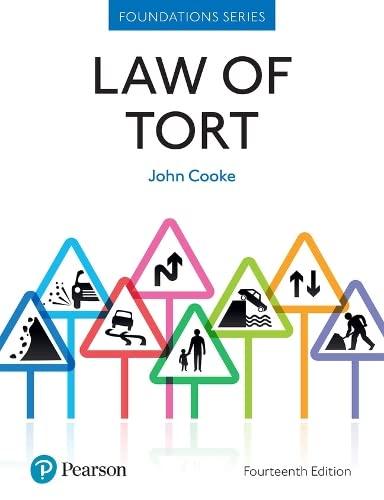Answered step by step
Verified Expert Solution
Question
1 Approved Answer
Foundations of Legal Studies Course Miller, Primer ch. 4 (pp. 85-114), Sarat Ch. 11 (J.B. White, Law as Rhetoric), Sarat Ch. 14 (Cover, Violence and
Foundations of Legal Studies Course
Miller, Primer ch. 4 (pp. 85-114), Sarat Ch. 11 (J.B. White, "Law as Rhetoric"), Sarat Ch. 14 (Cover, "Violence and the Word")
- Miller's chapter is purely descriptive, but it is material people should know. What sorts of cases go to federal Article III courts? How about state courts? What routes are there to the U.S. Supreme Court and what steps are involved (see esp. p. 87)? If you had to explain the logic of the U.S. court system to a friend who was totally unfamiliar with the structure of the courts in four sentences or less, how would you do it?
- Consider the three alternative purposes of law we discussed last week and how they relate to the metaphor of law as language. Does saying that law is "rhetoric" leave out any important aspects of what we normally consider law to be? How could you (or anyone else) make use of the law in its role as a language? What model of law does "law as rhetoric" fit into?
- How does Cover argue against the view of "law as rhetoric"? What role does law play in the state's management of its monopoly over the legitimate use of violence, according to Cover (see his discussion on p. 85we will come back to that idea)? Why, exactly, do we need law in its role as a form of language?
Step by Step Solution
There are 3 Steps involved in it
Step: 1

Get Instant Access to Expert-Tailored Solutions
See step-by-step solutions with expert insights and AI powered tools for academic success
Step: 2

Step: 3

Ace Your Homework with AI
Get the answers you need in no time with our AI-driven, step-by-step assistance
Get Started


